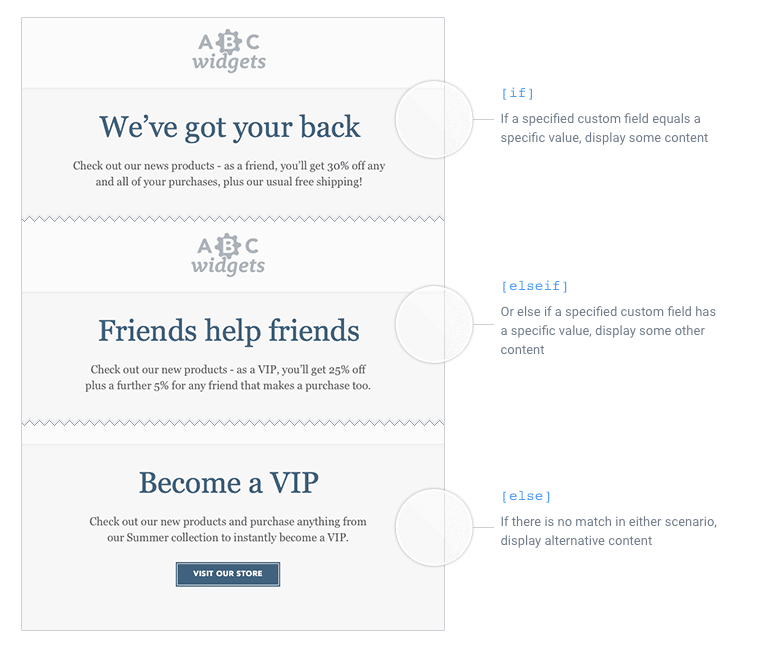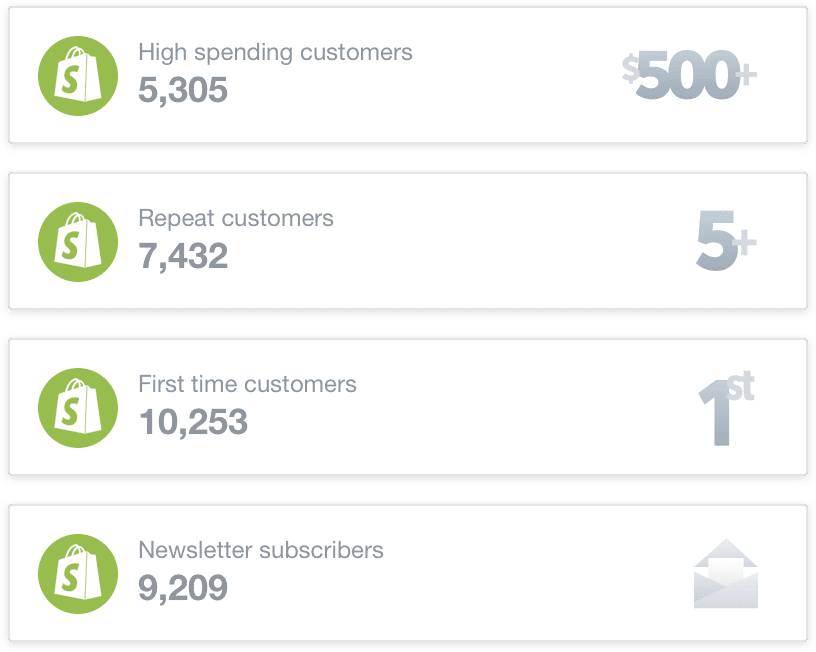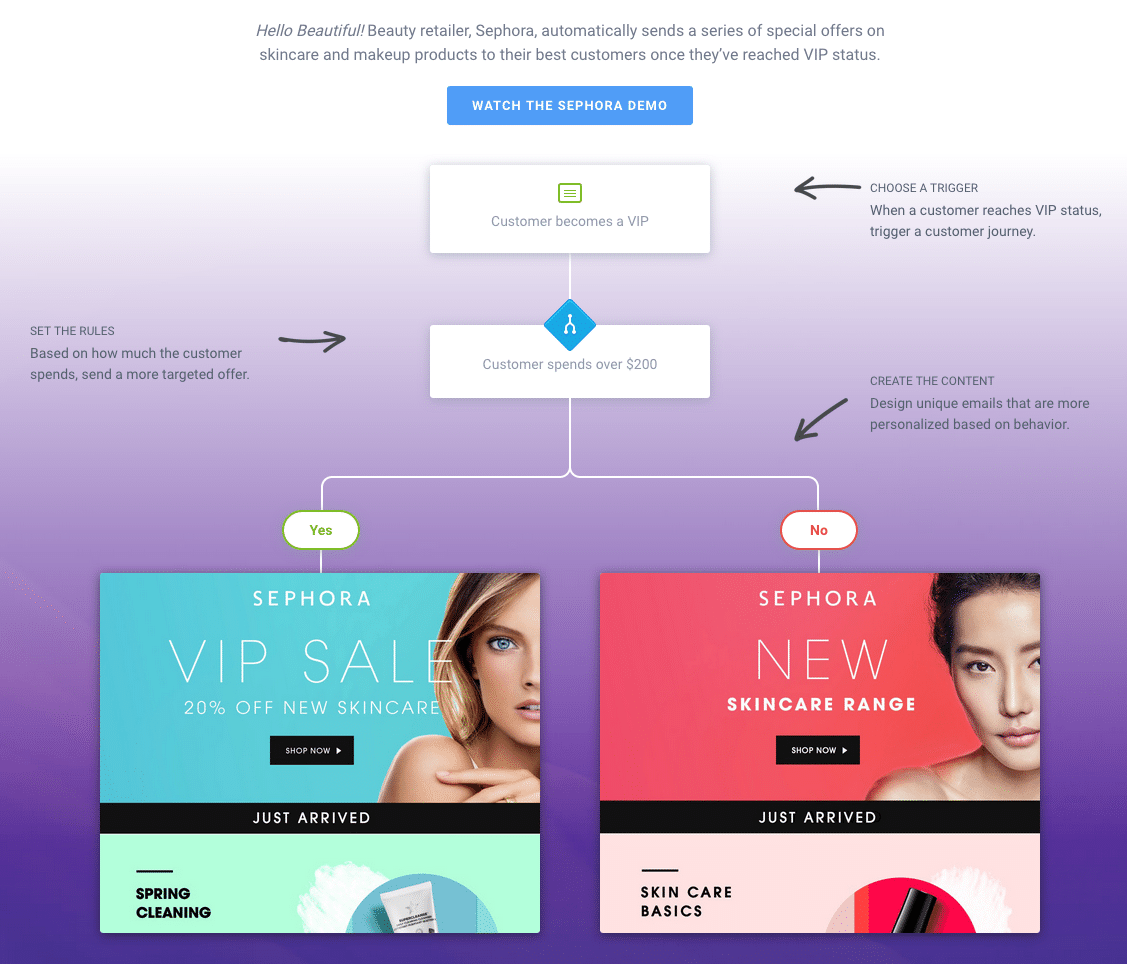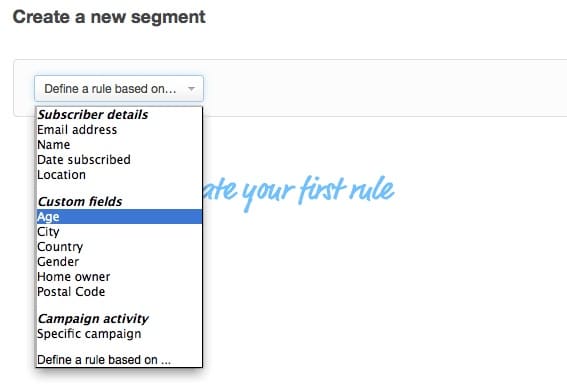Article first published in August 2017, updated July 2019
Email personalization is a tactic used by many marketers today. Of course, they’re doing it for a good reason.
Long gone are the days of one-size-fits-all messaging. Instead, modern marketers are striving to leverage personalization in emails that feel like they’re custom-made for the individual.
Why is personalization important in marketing?
Personalization is essential to marketing practices because people want to be seen as individuals. How can you do that when marketing to hundreds of people?
Personalized emails
- Personalized emails stand out within the inbox as highly relevant, tailor-made material.
- Personalized emails make an email more likely to be opened and clicked on.
- Personalized emails strengthen customer experiences by sending the right content to the right people at the right time.
How can you personalize your email campaigns?
Personalizing email campaigns isn’t as difficult as it may sound, and it doesn’t involve personally addressing each and every email that gets sent out.
Thanks to marketing tools, personalizing email campaigns can be as simple as using email list segmentation along with personalization tags.
Personalization tags
In Campaign Monitor, personalization tags are based on subscriber field data, which is information on your subscribers that was recorded during their initial opt-in for your subscriber list.
Using these tags to insert a user’s name is a great way to begin the personalization process, but using other data collected can help personalize your email campaigns even further.
List segmentation
List segmentation is the practice of dividing up your email list into smaller segments based on the information they provided during their opt-in, such as their gender, age, location, etc. This information can help you further personalize your email campaigns by tailoring content to their specific information, including past purchases, browsing history, and geographical location.
This is just the tip of the iceberg when you look at the benefits of email personalization. Today, marketers are going far beyond leveraging subscribers’ first names—they’re working hard to find ways to use smart, relevant email marketing to create new opportunities.
However, don’t just take our word for it. Check out some of these email personalization stats that might surprise you. Take a look at the numbers we’ve collected to see how important this approach is within the modern email setting.
Email personalization stats
These email personalization stats help tie some hard numbers to the buzz around email personalization. No matter how you slice it, personalization is helping boost the success of email marketing strategies across a wide array of industries.
- 66% of marketers are working toward securing internal resources to execute personalized marketing programs. – Conversant Media
- When asked to prioritize one capability that will be most important to marketing in the future, 33% of marketers answered: “personalization.” – Adage
- 74% of marketers say targeted personalization increases customer engagement. – eConsultancy
- Only 39% of online retailers send personalized product recommendations via email. – Certona
- Emails with personalized subject lines are 26% more likely to be opened. – Campaign Monitor
- Personalized emails deliver 6x higher transaction rates. – Experian
- 53% of marketers say ongoing, personalized communication with existing customers results in moderate to significant revenue impact. – DemandGen
- 94% of customer insights and marketing professionals across multiple industries said personalization is “important,” “very important,” or “extremely important” for meeting their current email marketing objectives. – Conversant Media
- Segmented and targeted emails generate 58% of all revenue. – DMA
- Marketers have noted a 760% increase in revenue from segmented campaigns. –Campaign Monitor
- Marketers see an average increase of 20% in sales when using personalized experiences. – Monetate
- 50% of companies feel they can increase interaction within email by increasing personalization. – Experian
- Some brands have recorded 8x improvement on click-through rates with a personalized video versus standard outbound email campaigns. – Marketing Land
- The open rate for emails with a personalized message was 18.8%, as compared to 13.1% without any personalization in 2016. – Statista
Email personalization stats for 2019
While the personalization stats above are eye-opening on their own, the trends are ever-changing, and that’s why we’ve compiled addition personalization statistics to help you better your email personalization game.
74% of marketers have stated that targeted personalization increases their overall customer engagement rates – eConsultancy
Birthday emails tend to generate 342% higher revenue pers email than standard promotional emails – Experian
On average, 36% of consumers have expressed an interest in purchasing personalized products or services – eConsultancy
Personalized calls to action convert 202% better than default calls to action – HubSpot
Personalized email marketing is said to generate a median ROI of 122% – Instapage
Email subject lines that are personalized generate an average of 50% higher open rates – Oberlo
55% of consumers have stated that they like email messages that contain relevant products and offers – Liveclicker
The share of U.S. consumers who find marketing content personalization “very” or “somewhat” appealing is 90% – Statista
Segmented, personalized and targeted emails generate 58% of all revenue – Instapage
62.26% of consumers feel “happy” and “excited” to respond to a personalized message from a retailer – Dynamic Yield Research
Email personalization tips
Now that you have some compelling stats about email personalization, let’s look at a few specific tips for how you can immediately incorporate personalization into your email efforts.
1. Leverage dynamic content.
allows you to determine who sees what content for each block of content within an email. Essentially, that means you can show different email contents to different segments or lists for a specific campaign, as seen in the example below.
Using your ESP, you can create multiple versions of the same email that’s personalized for different sets of subscribers based on the information you have about them (like whether they’re male or female, their purchase history, etc.)
Bonus: You can do this without having to create a new email every time—it’s all done within a single campaign.

2. Harness the power of integrations.
By integrating your email platform with other sources of subscriber information (like your CRM and e-commerce platform), you can build out robust profiles that help you deliver highly personalized emails.
From there, you can leverage information like name, demographic data, purchase history, etc., so your emails can instantly become much more relevant and engaging.

Wondering how you can get started? Check out Campaign Monitor’s full list of integrations.
3. Use automation to boost relevancy.
are all about sending the right information at the right time, which is ultimately another form of personalization.
Emails that are triggered to send after a subscriber takes action or reaches an important milestone (like a spending threshold or membership renewal date) shows that your brand is paying close attention to every customer.

The other benefit of using personalization this way is that it allows you to capture the momentum of important moments and turn them into moments for re-connection with your audience members. From birthdays to loyalty programs and beyond, the possibilities are endless when it comes to these opportunities for engagement and sales.
4. Pair with personalized landing pages.
Personalization that begins in an email should continue to flow to the next destination, like a landing page. Keep the forward momentum moving by building out personalized landing pages with tailored content based on the email that leads the subscriber to this point.
By keeping the attention focused on the message from your email, you can align the experience at the next destination for greater continuity. The entire journey is streamlined, and there’s less confusion about how the reader can keep following the path to conversion.
Wrap up
You’ve got the stats that show how personalization in email can produce impactful results for your brand (and you know the best practices for implementation, too.) All that’s left to do is to start creating your personalized email campaigns and testing to see which tactics work best for your audience. We think you’ll be impressed with the results.
Curious how other email marketing stats stack up? Check out our piece on 70 email marketing stats every marketer should know.
SaveSave
SaveSave
SaveSave
SaveSave







